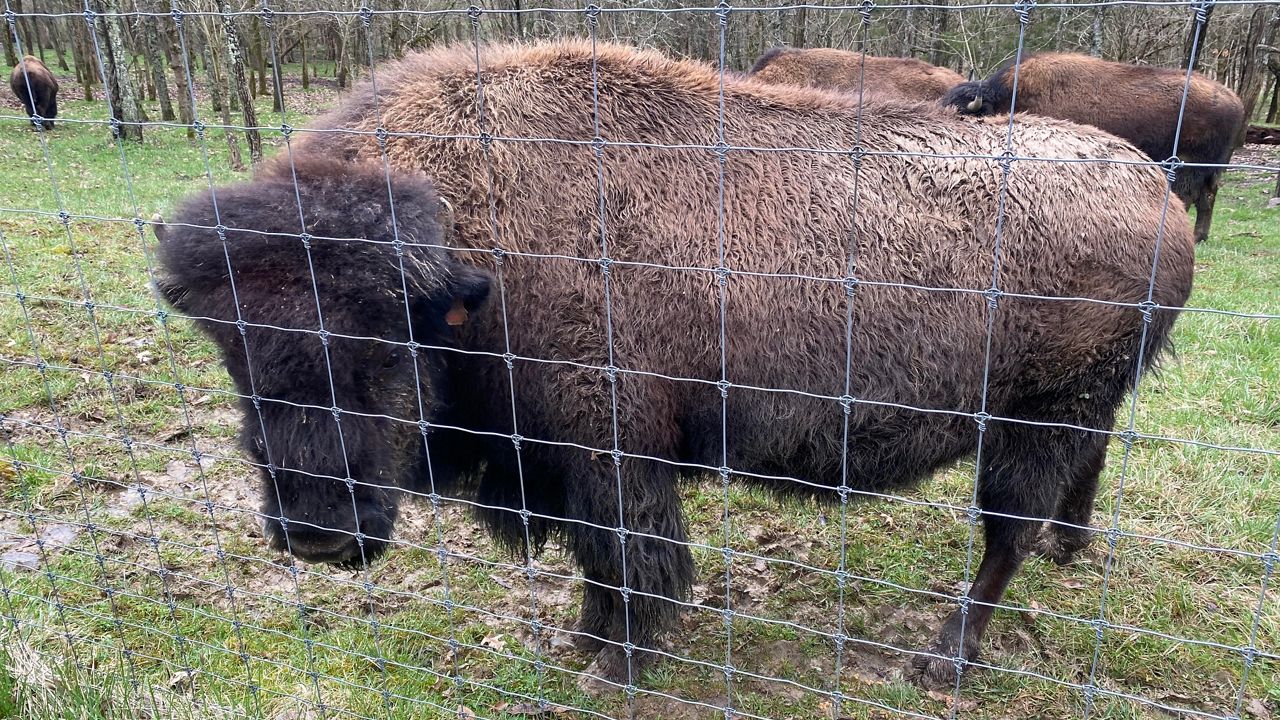American bison are alive and well in Kentucky
This state park is auctioning off two of its bison calves American bison, once a major threat in North America, once roamed North America from coast to coast, were wiped out to near extinction levels before they were reintroduced through conservation efforts. Claire Kolkmeyer, park interpreter and bison program supervisor at Big Bone Lick State Historic Site in Union, Kentucky, shares her personal experiences with the animals. She started working as an unpaid intern at the site as a senior in high school and has since been full-time full-term. Despite a herd of just 11 bison at Bigbone Lick, the site allows for two to four calves each year and does not keep bull calves in order to avoid unnecessary competition with the herd's herd bull, Henry. The bison are semi-domesticated and are used as a living link to their ice age ancestors.

Published : a month ago by Sam Knef in Science
UNION, Ky. — American bison once roamed North America from coast to coast by the tens of millions before they were wiped out to near extinction-levels.
They’re now back up to healthier numbers through conservation efforts, but few know the storied history of the United States’ national mammal.
A state park in Union, Kentucky, is doing its part to share that history.
When Claire Kolkmeyer, park interpreter and bison program supervisor at Big Bone Lick State Historic Site, gets to shaking her bucket of grains, the bison come running.
“They all have their own personality,” she said. “Some of them are much sweeter; some of them are much feistier, so it’s really fun to get to know them.”
Kolkmeyer said she loves sharing the history of bison with park guests as it was once shared with her.
“I actually grew up camping here at Big Bone a lot as a kid with friends (and) family,” she said. “We were here almost every weekend. It had such an impact on me wanting to work here and help preserve (the) environment, species like bison, that made me want to turn around and do the same thing as an adult.”
Kolkmeyer started working as an unpaid intern at Big Bone as a senior in high school. She was later hired to do seasonal work and has now been full time for around five years.
“I’ve been here for 10 years, and taking care of the bison has always been my favorite part,” she said. “Now that I get to supervise the program, I’m really excited to see what I can do with it.”
“They’re our living link to our ice age ancestors.”
Big Bone has a herd of just 11 bison. But if one were to go back in time to 1600, they’d see a sea of brown.
“This animal, as a species, would’ve once roamed an estimated 30 to 60 million,” Kolkmeyer said. “That’s essentially east coast to west coast, Canada to Mexico. They were virtually everywhere.”
“Then you hit 1889, and these animals are estimated to be less than 1,000 heads still surviving from hunting for sport, hunting to hurt indigenous cultures. There was really just a vendetta against bison.”
Thanks to conservation efforts, bison numbers have now returned to about a half a million, Kolkmeyer said. The bison at the site are considered semi-domesticated.
Big Bone likes to keep no more than eight adults, allowing for two to four calves each year. There’s an auction every spring, and this year, two bull calves will go to new homes.
“We can never keep bull calves because you want to avoid any unnecessary competition with our herd bull (Henry),” Kolkmeyer said. “To him, a male is competition for his ladies here in the herd.”
Plus, the bison each need about three to five miles for grazing. At 1,000 to 2,000 pounds of almost pure muscle, they’re athletic.
“I am fascinated with how powerful the animal is, especially when they come across as so docile when they’re out grazing,” Kolkmeyer said. “They can turn and quickly go through a fence or take somebody out. They can run anywhere from 35 to 40 miles an hour, and they can sustain that for up to 45 minutes, close to an hour.”
“They can have an outward bound of anywhere from like seven to 10 feet, but their vertical jump is over six feet.”
Kolkmeyer said sometimes the bison are bought to be eaten, as people have been surviving off these animals for thousands of years.
Kentucky State Parks date back to 1924 and is celebrating 100 years of service with several events set for this year. Kentucky State Parks’ slogan is “The nation’s finest.”
Topics: Wildlife, Bison
